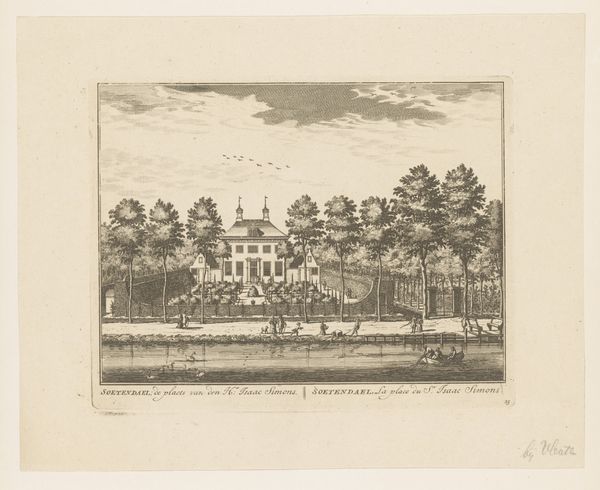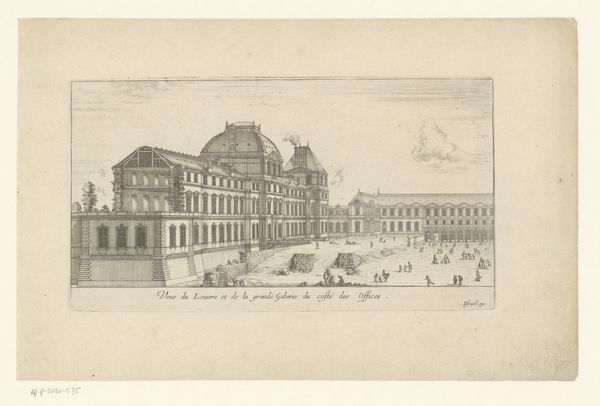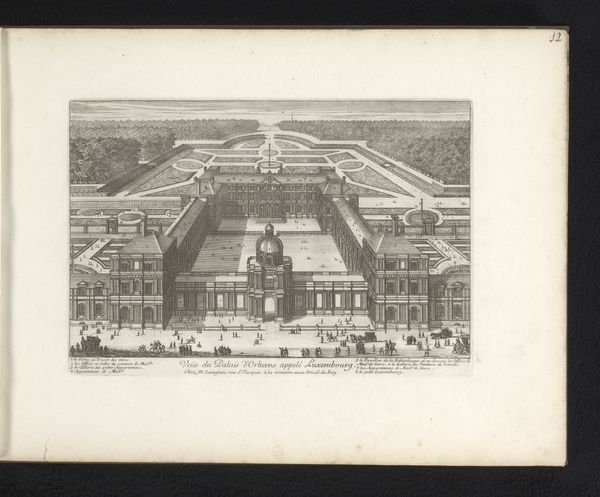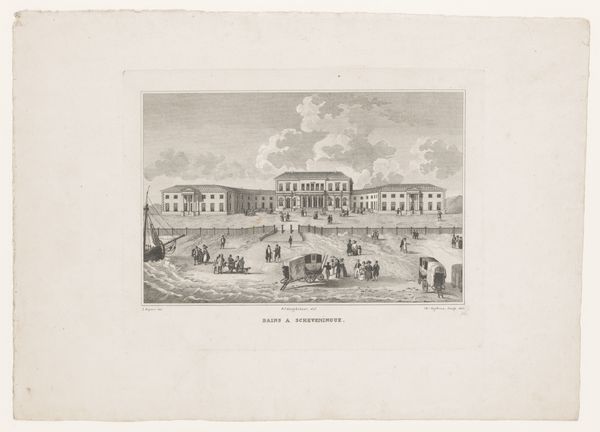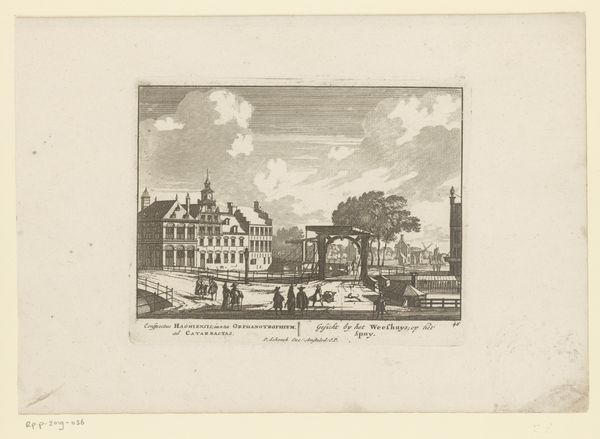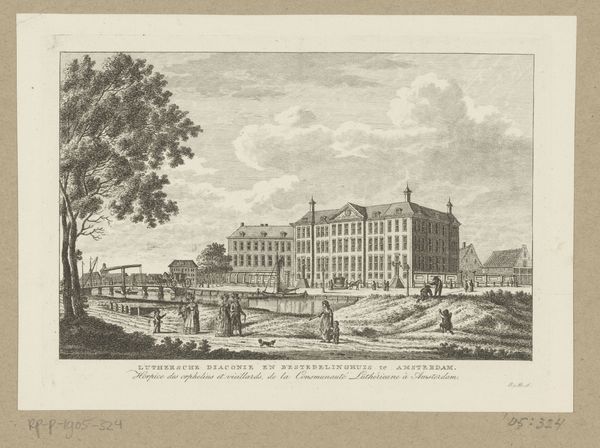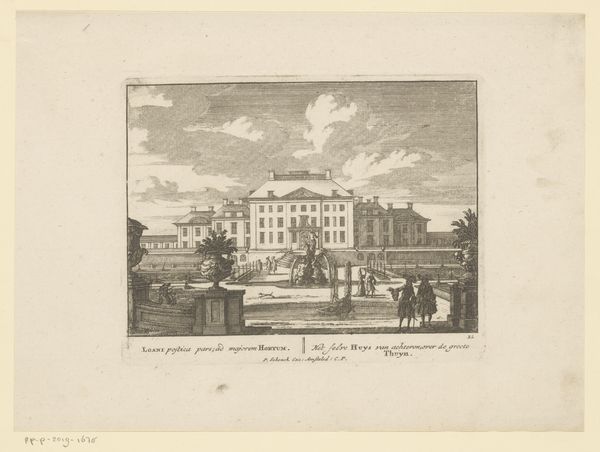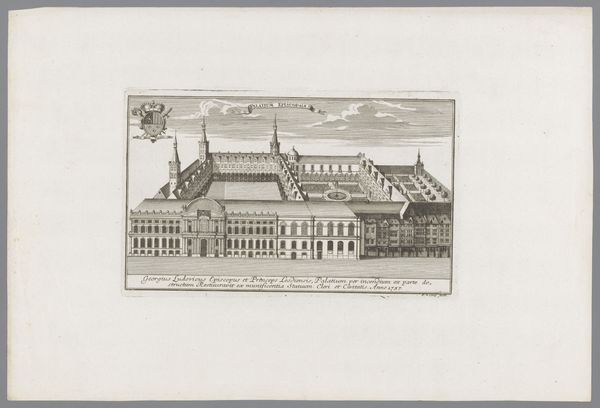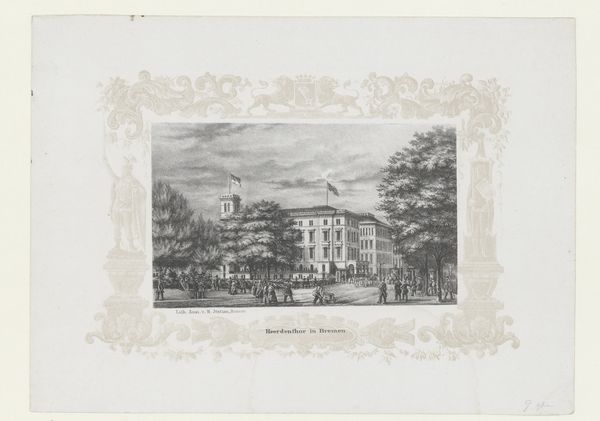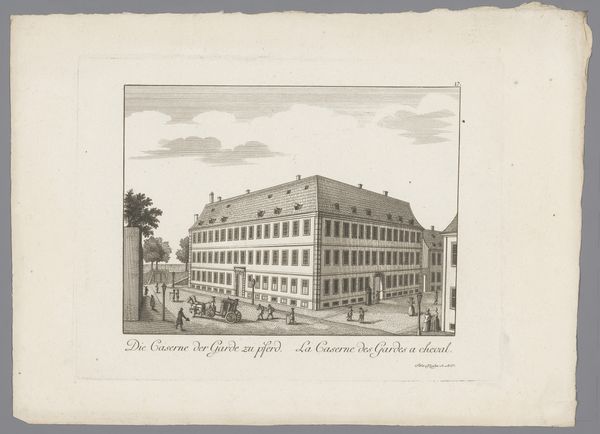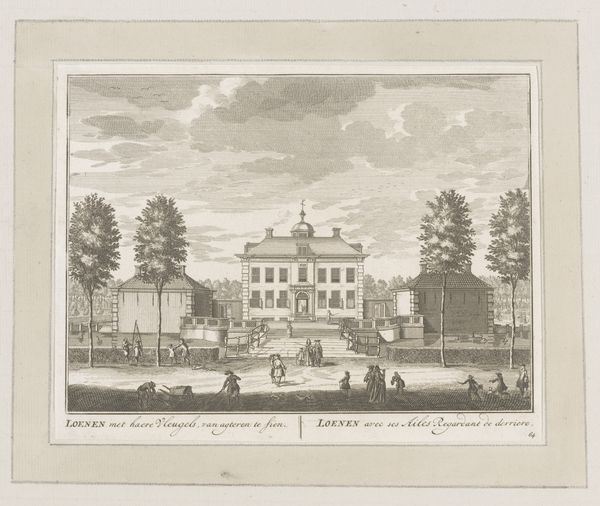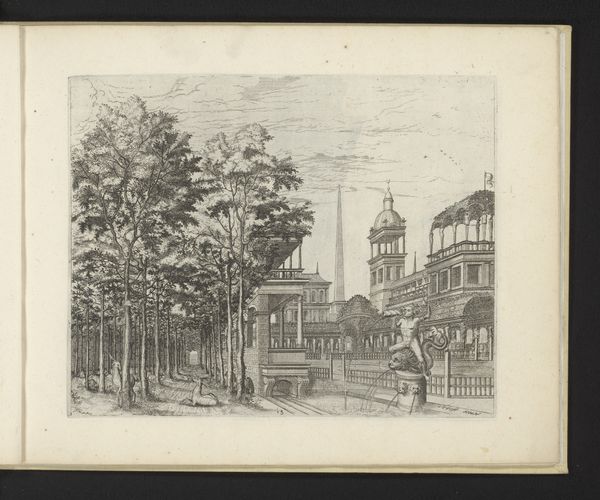
drawing, print, engraving, architecture
#
drawing
#
neoclacissism
# print
#
pen sketch
#
landscape
#
cityscape
#
engraving
#
architecture
Dimensions: 5 3/8 x 7 in. (13.7 x 17.8 cm)
Copyright: Public Domain
Curator: So, let's talk about "A Ruler's Palace," an engraving by Joseph Lemercier, likely created sometime in the 19th century. Editor: The immediate impression is of incredible order and serenity, wouldn't you say? A sense of absolute control in how every aspect of this landscape is organized, and how diminutive the human figures look. Curator: Absolutely. The piece epitomizes neoclassicism, doesn't it? A harkening back to Roman ideals of architectural grandeur and civic virtue. The building is a powerful display of hierarchy, a building created in three sections, each designed differently. Editor: It’s also fascinating how a relatively simple engraving can convey such a clear sense of power and scale. It’s just lines and dots, really, but together it evokes the weight of institutions. But tell me more about how architecture reflected power dynamics at the time. Curator: In the wake of revolutions, Neoclassicism provided a visual language for rulers seeking to legitimize themselves through associations with classical empires and their emphasis on order. You know, a statement about permanence and control in times of dramatic socio-political change. A move into urbanization that pushed the separation of people, city and architecture. Editor: It's interesting to think about how this piece sits within the collection today. What purpose did a pen sketch turned print have at the time versus now in a museum collection? I would imagine this allowed the public, at that time, an intimate look into power. Curator: Prints like this made such imagery widely accessible; disseminating ideas and aspirations beyond elite circles. That makes me question whether such a vision of strict order could actually appeal. It would take more than grand architecture to convince of a better world after all. Editor: It makes me ponder the impact on artists. Joseph, through architecture, immortalizes royalty in Neoclassical glory while social awareness grows. What goes through an artists' mind at this moment? It could make them proud to work in that system or spark internal rebellion. A difficult dance, for sure. Curator: A dance indeed. The lasting impact may be that it provides critical tools. It makes you consider questions surrounding the relationship of people to authority and how authority expresses itself through space and symbol. Editor: I'm still left wondering what the actual space looks and feels like. The limitations of a drawing open doors for imagination to flourish, don't you think?
Comments
No comments
Be the first to comment and join the conversation on the ultimate creative platform.
